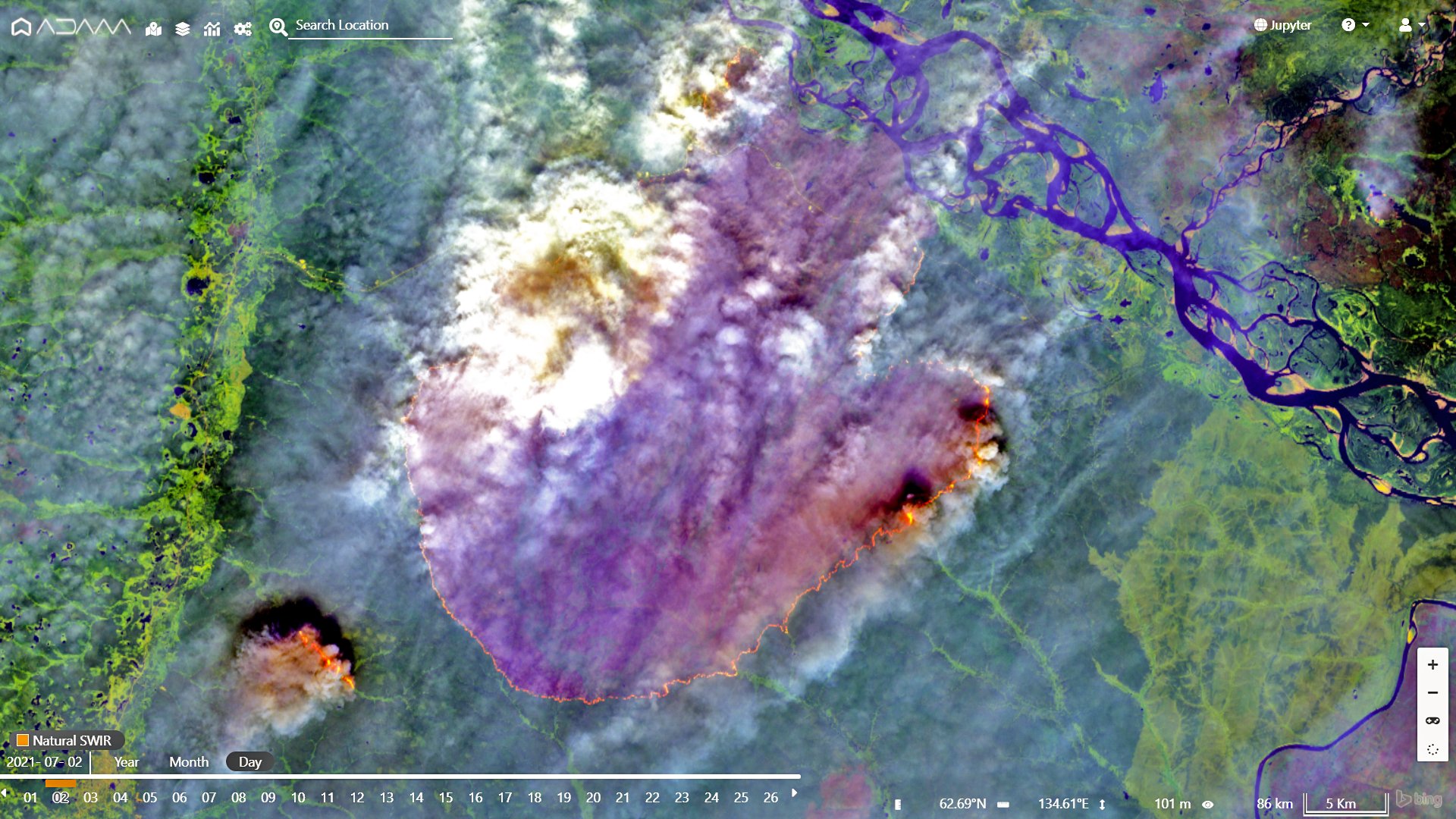Zombie Fires and Wildfires Rage in Yakutia, Russia (Again)
In May locals reported fires burning near Khandyga, 380 km northeast of Yakutsk - a region hit by last summer’s wildfires, with temperatures diving as low as -58ºF (-50ºC) during the winter months.
In May locals reported fires burning near Khandyga, 380 km northeast of Yakutsk – a region hit by last summer’s wildfires, with temperatures diving as low as -58ºF (-50ºC) during the winter months.
StrangeSounds May 6th 2021: Last week, authorities put Novobirsk’s 1.7 million residents under what’s known as a “black sky” air quality warning as smoke from nearby wildfires blanketed the city.
In late April, the Siberian Times reported that 27 houses were destroyed in the city of Kemerovo and 50 in Russia’s third-largest city of Novosibirsk, with more destruction in other surrounding districts.
Ice on fire: first wildfires are registered around the world’s Pole of Cold in Yakutia (May 2021)
Could the early start of wildfires in areas as cold as Oymyakon in Yakutia be linked to the so-called 'zombie' (peat) fires? This one outside Khandyga, for example, was first seen by locals in Nov '20. Our footage (filmed end of Feb '21 at -30C) shows that it didn't stop burning pic.twitter.com/NYkt013U2n
— The Siberian Times (@siberian_times) May 2, 2021
Wikipedia: In wildfires, a zombie fire or overwintering fire is a peat fire which persists from year to year.
Now wildfires erupt in the region (again)
The Siberian Times June 30th 2021: Kolyma highway in Yakutia, also known as the Road of Bones, is on fire and temporarily shut. More than 2,000 people are deployed in extinguishing wildfires raging around Russia’s coldest inhabited territory, Yakutia, now in the third year of extremely intense season of wildfires.
The first of them ignited as early as the beginning of May right outside the world-famous Pole of Cold, the village of Oymyakon in northeastern Yakutia known for its record low temperatures. Wildfires continued through May and June, with extra fire extinguishing forces needing to be sent from other regions to help republic’s own teams.
Today Kolyma highway, the major road connecting republic’s capital Yakutsk and the port town of Magadan on the Sea of Okhotsk, had to be shut because the fire got too close to the road and was much too fierce for safe driving.
Forest fires #wildlife near the famous natural rock formation "Lena Pillars", Yakutia.
— Kirill Bakanov (@WeatherSarov1) July 9, 2021
07-09-2021@Pierre_Markuse @m_parrington pic.twitter.com/cnsKFScA0M
Meanwhile…
— Jim Baird (@JimBair62221006) July 10, 2021
Siberian wildfires spread 17.5% in 24h
An additional 70,000 hectares, for a total of 400,000 ha (~1,000,000 acres) are now on fire
Average June temperatures were 2-5°C (3.6-8°F) above the norm this year#ClimateCrisis #Russia #SiberiaFirehttps://t.co/0Ij0LHZ9ma
A team of firefighters in Tattinsky ulus, north-eastern Yakutia was trapped by fire on their way home, and had to seek other routes to escape pic.twitter.com/AXiiyyJqwB
— The Siberian Times (@siberian_times) July 3, 2021
Siberia is on fire! Here an impressive #Copernicus #Sentinel2 image of the #Yacutia #wildfire (25 km western of #Khandyga) and thick smoke clouds, detected on July 2nd. Burning more than 700km2! #ClimateEmergency #Siberia @WMO @Emergenza24 #Russia pic.twitter.com/8RIISvYJDz
— ADAM Platform (@PlatformAdam) July 2, 2021
The Siberian Times June 30th 2021: ‘We can’t see the Sun because of the smog, flakes of ash are raining from the sky.
‘We are struggling to breath, we really need help’, complained residents of Udarnik village in Tomponsky district, north-eastern Yakutia.
The Siberian Times has kept a particularly close eye to this area because of the field of peat fires continuing to burn all through Yakutia’s severely cold autumn and winter.
The peat fire started right after summer-2020 wildfires, and clearly never stopped since.
There is no hope for the situation easing in July, as the heatwave will continue and the air temperature in Yakutia will stay ‘way above the norm’, according to Russia’s chief weather expert Roman Vilfand.
Last year nearly 70% of all Russia’s wildfires were in Yakutia, reported the Ministry of Nature, with over six million hectares of forests and fields burnt.
That is real hell on the Earth ? NOW #Russia the frontier of #ClimateCrisis pic.twitter.com/vF0BzmQK8i
— iLikeGreen ? (@AntonBoym) July 2, 2021
https://twitter.com/defis_eu/status/1411989857824542726
RELATED
Independent: Land temperature in the Arctic Circle region has peaked at 48C in recent days, in what has been described as a “persistent heatwave” in an area increasingly hit by wildfires and above-average temperatures.
The European Union’s Copernicus Atmosphere Monitoring Service said land surface temperature across Siberia had “widely exceeded” 35C on the first day of summer on 20 June.
Saskylakh, an Arctic town, recorded 31.9C on that date, according to Copernicus, the small community’s hottest temperature before the summer solstice since 1936. The EU satellites also found land surface temperatures peaking at 48C near the town of Verkhojansk, 43C in Govorovo and 37C in Saskylah on 20 June.
That follows a temperature rise above 30C in parts of the Arctic in May, much higher than average for the time of year. Climate scientists described it as “mind boggling”.
They warn that the rising temperatures are causing the ice and permafrost to melt, which in turn causes previously trapped methane to be released into the atmosphere and contributes to global heating.
